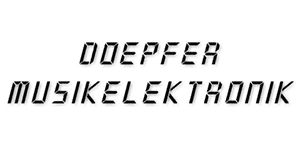
Doepfer Musikelectronik company is famous as a Eurorack modular synthesizers originator (compact, budget, 3U format, HP (Horizontal Pitch) dimensions, with built-in but non soldered components allowing further upgrading).
Dieter Döpfer listened to his father and forced himself to play accordion – he had no interest in music but later became renowned as a Eurorack inventor etching his name into history. Maybe it was physics which aroused his appetite or it could be guitar which attracted Dieter no more than accordion did but the guy appeared to be keen on synthesizers. The technology, the details of which weren’t an open source for anyone interested, grabbed his attention.
Formant - a DIY kit from Elektor magazine (1977), analog modular synthesizer – became the first Dieter’s victim for which he constructed phaser. Formant was that very source of missing information which taught Döpfer how to build basic circuitry for any synthesizer. He had to build them right at his working place, i.e. in the laboratory of a big Munich clinic. Head physician couldn’t tell the difference between medical electronics and Polyphonic Module System design which would soon become the first full-fledged synthesizer made by Dieter. Although only a synth geek would agree to assemble this crazy unit. Only 30-50 systems were sold during 3 or 4 years.
In the end of 1982 Voice Modular System (VMS) was produced owing to which Dieter could pay his bills. VMS was based on 2 VCOs, VCF, VCA and 2 ADSR. Sound was generated by CEM (Curtis Electronic Music Specialties). That’s how Döpfer distributed American IC all over Europe starting with German ones: Waldorf, Wersi, Böhm and Dynacord. There were some issues though: Curtis chips had super quality but no one could rely on their production regularity - so any time a user wouldn’t be able to replace a chip.
The company went on keyboard making together with Böhm based on E-510 chip beginning with LMK-1 master keyboard which was followed by MMK 2, MKC 1/2 (could be combined with LMK 1), LMK 3 (velocity sensitive piano type with aftertouch), LMK1 V2 (an improved version of the first model which took many features of the latest units). LMK1+, LMK2+ (LED displays) were put on the market a bit later, LMK4+ (with an LCD) with introduction of hammer action. Quality keyboards put the small brand on top. Doepfer also created the number of MIDI devices.
Together with Kraftwerk MAQ 16/3, analog sequencer, was released featuring full MIDI implementation, arranging 3x16 sequences.
All the parameters of the analog monophonic synthesizer by Doepfer – MS 404 – had MIDI support. The instrument emulated Roland TB-303 and was considered to be quite a successful clone – moreover, it had 2 LFOs modulating oscillators.
In 1995 A-100 modular system came out which started out as a 10-unit system and later numbered around 120 various modules; in 2006 a keyboard-sequencer entered the series. Modules 110-119 are instruments-modifiers; modules 120-129 are filters; 130139 – amplifiers and mixers; 140-149 – mainly oscillators. 150-159 – switches and sequencers; 160-169 – control modules operating with Clock and Gate signals. Other modules were responsible for effects, bit modification, attenuator, interface and many other details. Such a diversity of the instruments allowed musicians to get unlimited possibilities of sound altering even if they used only Doepfer modules despite the fact that Eurorack standard ensures compatibility between any modules in the Eurorack format.
In 1998 PK88 was developed which was a great choice for touring musicians – a compact keyboard of high quality allowing you to increase the number of its possibilities by expander or a software synthesizer.
Dark Energy series analog monophonic synthesizers were released in 2009 and included 2 models: first Dark Energy (based on A-111-5 Synthesizer Voice) and an enhanced version Dark Energy II (2012). Dark Energy was capable though quite a miniature synthesizer which had a wide sound range: from thick bass voices and classic or aggressive leads to peculiar noises generated by frequency modulation. The modular synth featured traditional MIDI jack, USB (the only digital component) or MIDI/CV converter interface. Curtis chips introduction appeared to be an ungrateful business due to their scarcity – the first model was discontinued in 2012. It was replaced with an identically looking Dark Energy II though significantly upgraded inside. The filter was the main transformation and that’s why the sound of the new model differed considerably – it appeared to be more thick and punchy.
Analog technologies of instruments made by Doepfer company are now widely used. It doesn’t mean that digital technologies are being underrated by the brand. Every time Doepfer triumphed at the shows and music fairs. Hans Zimmer, a famous composer and movie soundtrack maker as well as a big modular fan, made us all pay attention one more time to the A-100 modular system. A-100 was also celebrated by John Frusciante, Trent Reznor, Deadmau5 and The Human League.

